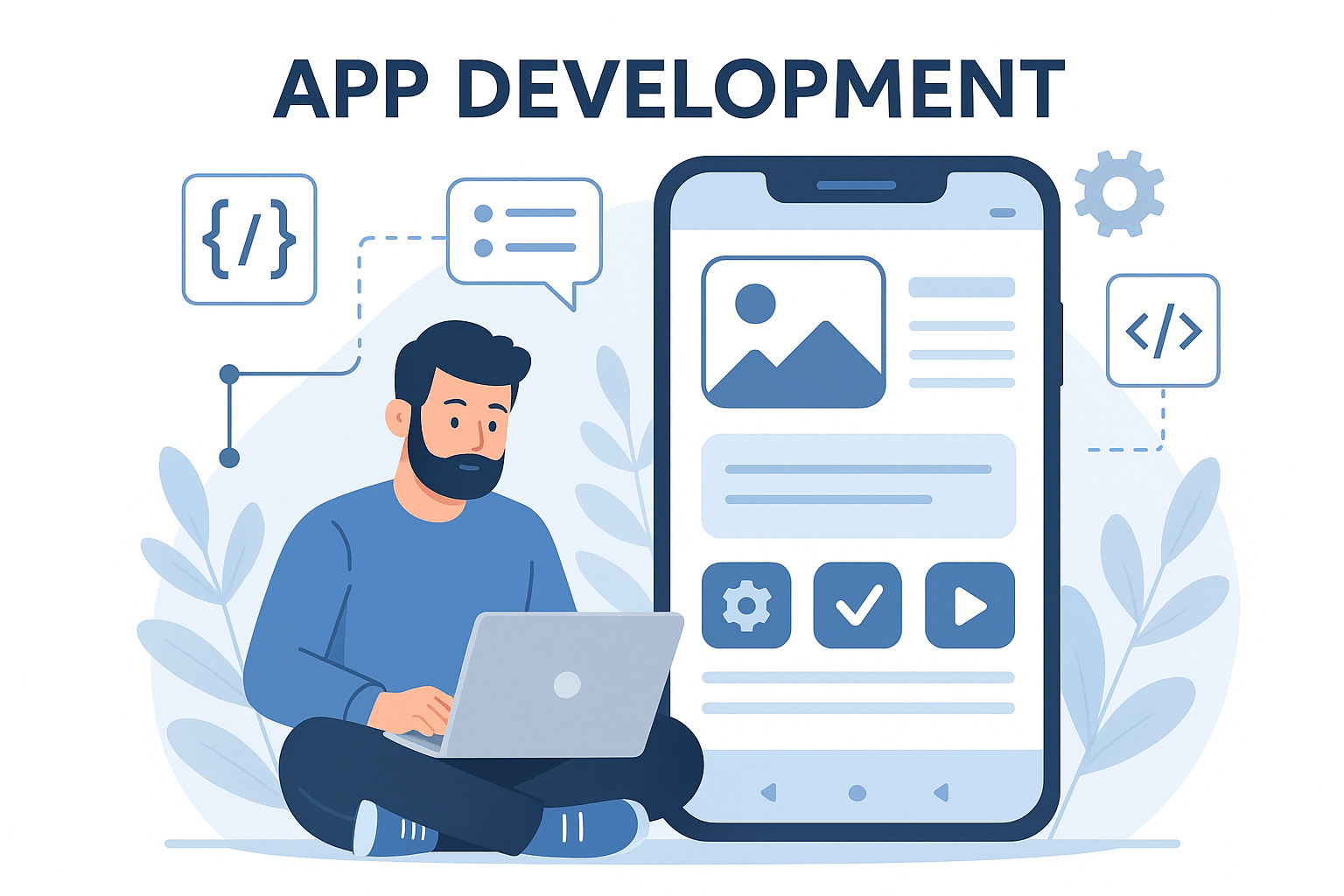In a world where mobile apps generate over $400 billion per year, excellent ideas combined with great app development can become seismic activity for business cultivation. Application development has become the new storefront, marketplace, and customer touchpoint for small businesses and tech giants alike. But what does an app need to be built successfully?
This guide will take you through the importance of app development, the way app developers go about it, and the things that build their skills in turning an idea into a scaled, usable product.
Why App Development in Today’s Digital Economy
According to an average smartphone user, over 4 hours are spent daily on mobile apps. Ordering food, paying bills, learning new things, or just chatting with friends: apps rule the modern way of life.
For entrepreneurs and businesses alike, mobile applications are more or less must-haves for:
- Connecting with customers
- Helping with the collation of services
- Squeezing out new ideas
- A finishing touch for the monetization of products
A well-developed app builds brand loyalty and provides value beyond what traditional websites can offer.
Key Benefits of Investing in App Development
1. Direct Customer Access
Apps engage users directly through push notifications, creating personalized experiences, and supporting smooth interactions.
2. Brand Building
Having your app marketed in the Google Play Store or Apple App Store helps create brand exposure and credibility.
3. Data-Driven Insights
Apps can track user behavior and preferences, thus feeding you with information on how to make business decisions and change the offerings accordingly.
4. Monetization Possibilities
In-app purchases, subscriptions, and advertisements introduce new ways of monetizing, which are otherwise impossible on traditional platforms.
Step-by-Step Guide to Developing Your Mobile App
Step 1: Idea and Research
Define your app’s core purpose-” What problem does it solve?” “Who are your targeted users?” “You can check out Google Trends, App Annie, or SimilarWeb to help you validate demand.”
Step 2: Wireframing UX/UI
Design your user flow and user interface screens using tools such as Figma, Adobe XD, or Sketch. Keep it simple cluttered interface or confusing navigation is often a major point of failure.
Step 3: Choosing the Right Tech Stack
Decide between:
- Native development (Swift for iOS and Kotlin for Android) for performance
- Cross-platform frameworks such as Flutter or React Native for faster deployment and cost savings
Step 4: Development and Testing
This is the coding phase. Front-end developers and back-end developers should themselves make the software. Testing must include:
- Functional testing
- Usability testing
- Performance and security testing
Step 5: Deployment
Put the app on the Apple App Store or the Google Play Store. It is different for them to accept or guidelines. They want to use different platforms, such as App Store Connect or Google Play Console, for uploading the version and keeping track of downloads.
Step 6: Marketing and Maintenance
Apps need continuous updates, marketing, and user engagement. Spend money on ASO (App Store Optimization), digital ads, and feedback from users.
Real-World Case Study: Calm App
The Calm app started as a simple meditation tool and evolved into a full-fledged wellness platform. By continuously iterating its user experience, adding expert content, and integrating with Apple HealthKit, Calm grew to over 100 million downloads and became a unicorn startup.
Their secret? Unrelenting focus on user-centric design, expert content, and adaptive monetization strategies (free trials, in-app purchases, and tiered subscriptions).
Actionable Tips for First-Time Developers
- Start with an MVP: Don’t try to build everything at once. Focus on one killer feature.
- Outsource wisely: Use platforms such as Toptal, Upwork, or CodeMentor to find vetted developers.
- Secure your app: Always use HTTPS, encrypt user data, and follow OWASP mobile security best practices.
- Use analytics from day one: Use Firebase, Mixpanel, and Amplitude to analyze user behavior.
Common Mistakes to Avoid
- No user research: Assumptions cause failures. Validate with surveys or early user interviews.
- Complex interface: Simplicity will win. One major action per screen is a good rule of thumb.
- No attention to app store optimization: App title, description, and reviews directly influence app visibility.
- No attention to performance: Long loading times and frequent crashes have users uninstalling.
Future Trends in App Development
1. AI-Powered AppsIncreasingly, apps are using machine learning for personalization, chatbots, and predictive analytics. Integrating these apps might give you a head start if you are using tools like OpenAI, Google Cloud AI, or Azure Cognitive Services.
2. 5G and Edge Computing
Speed is a prerequisite for immersive experiences- real-time gaming, AR, HD streaming.
3. Voice and Gestural Interfaces
Apps move away from touch and embrace natural interaction. Think voice assistants, hand gestures, and maybe even facial recognition to issue commands.
4. Low-Code/No-Code Platforms
Platforms like Bubble, Adalo, or Outsystems allow someone who hasn’t written code to do so for real, democratizing app creation.
Conclusion: From Ideation to Impact
App development is no longer in the purview of tech biggies. Be it you, a solo entrepreneur, a small business, or a scaling startup app is perhaps one of the most potent tools with which you can reach, serve, and build an audience.
From concept to deployment may be highly complicated, but with the right tools, insights, and execution plan in place, the journey is certainly doable.
Ready to build the next Big Thing? Start with perhaps some research, simplify your idea, and step out confidently for the first time. Subscribe to our newsletter for more in-depth guides, developer insights, and success stories across app domains.




